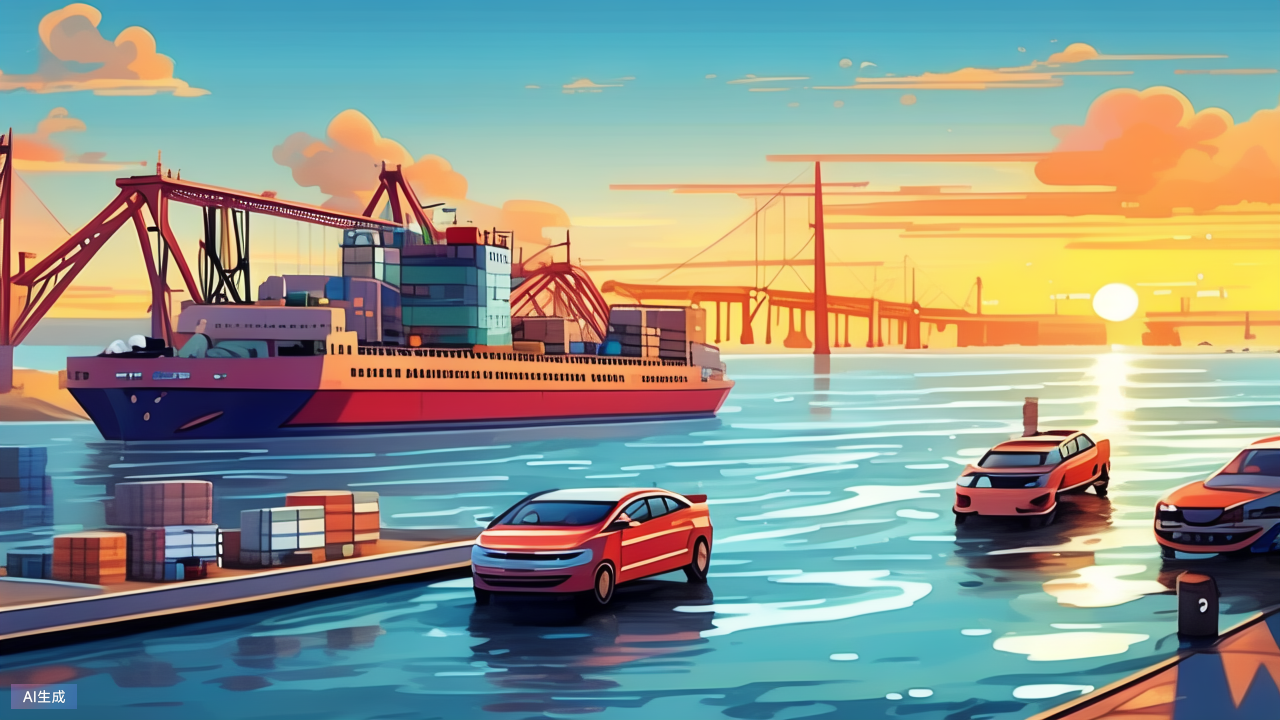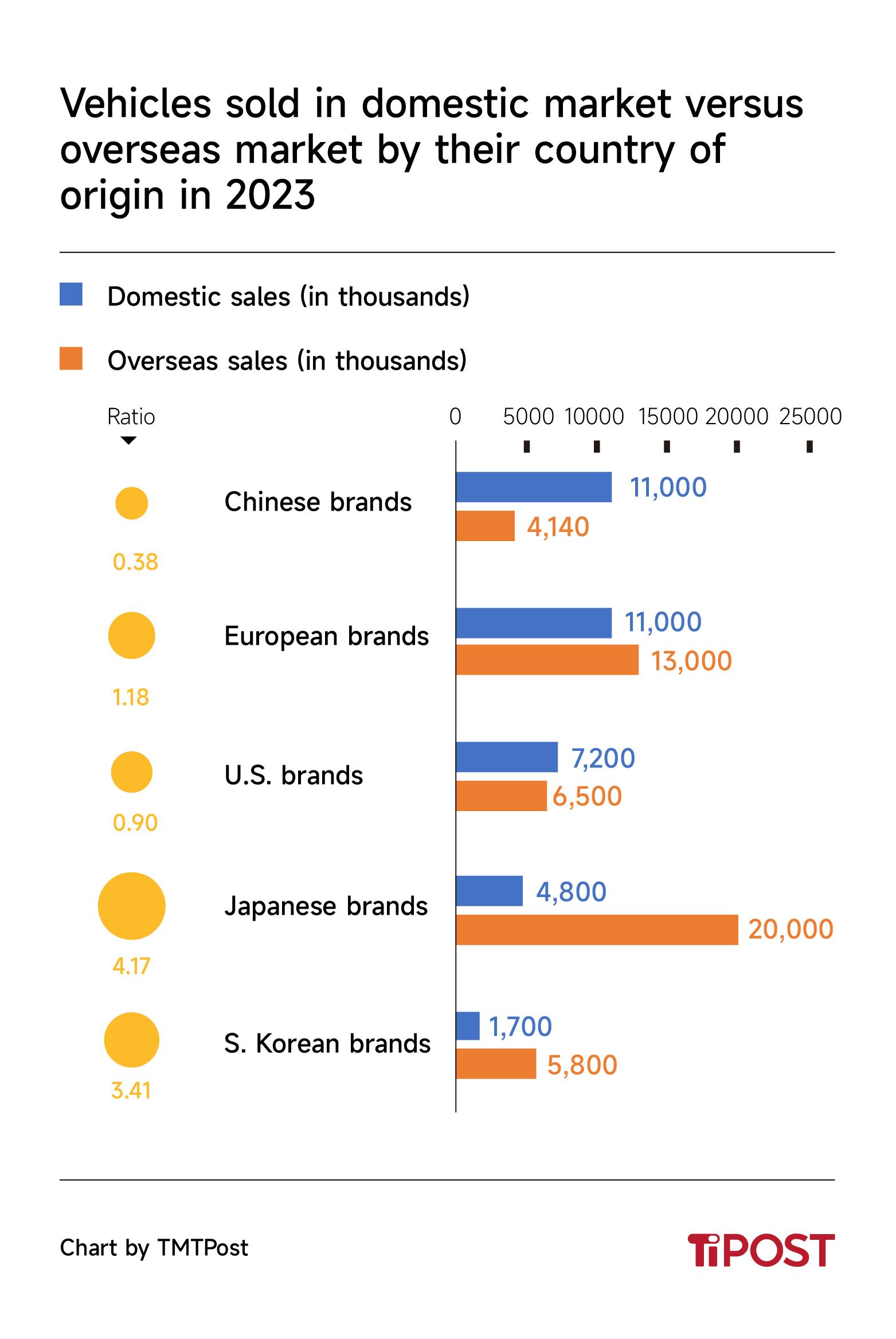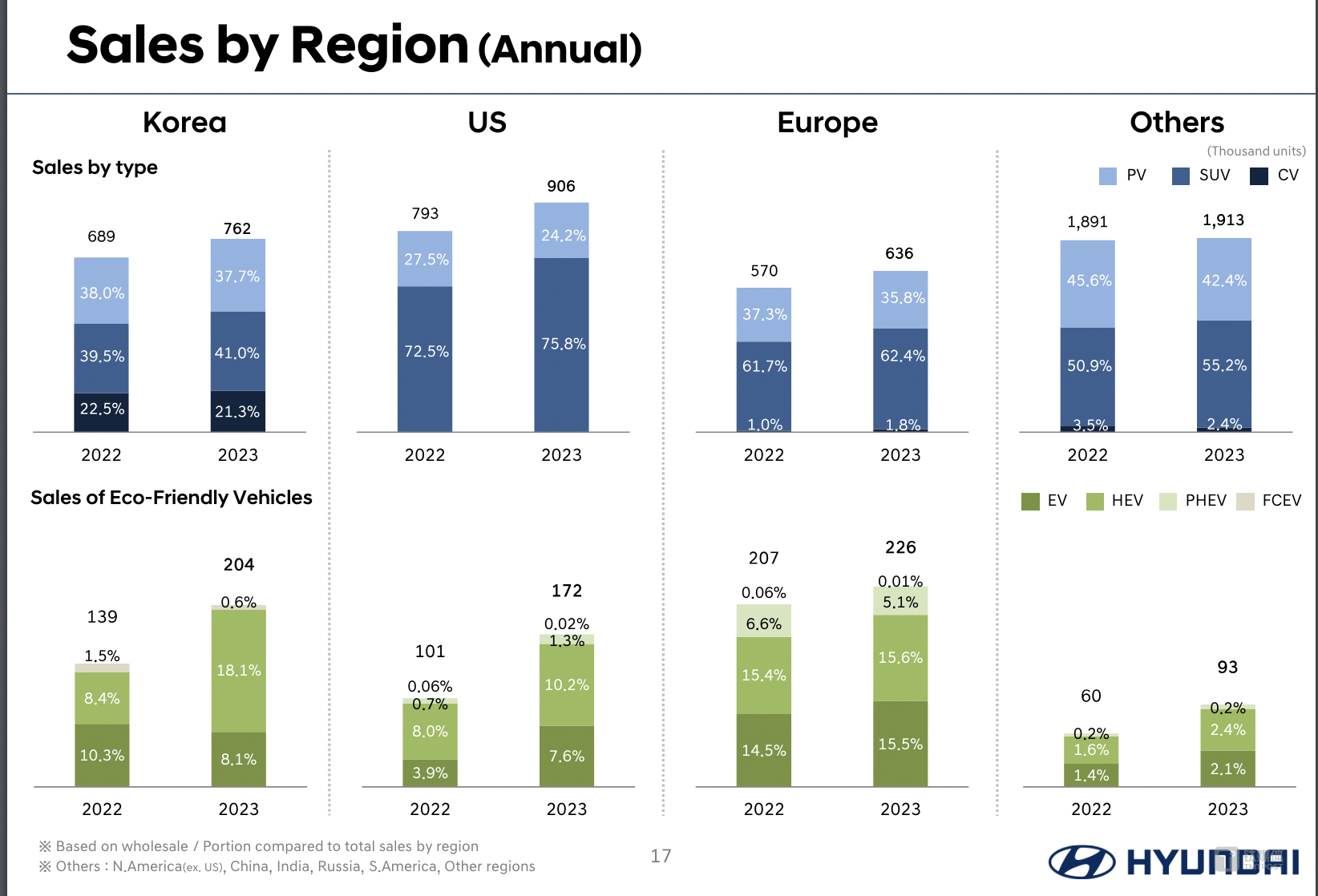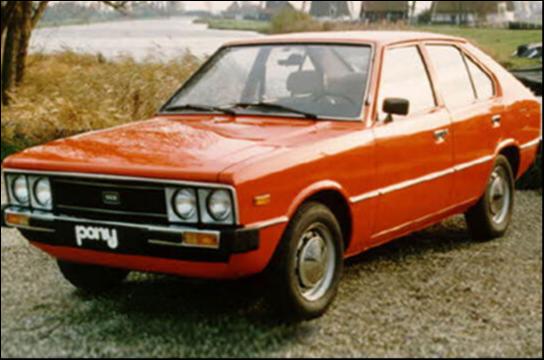
Image Source: AI Generated
AsianFin -- In 2023, Beijing Hyundai's annual sales reached 257,000 vehicles, managing to halt a six-year decline with a 2.8% increase. However, compared to the peak of 1.14 million vehicles sold seven years ago, today's Beijing Hyundai is far from its former glory.
At its peak in 2016, Beijing Hyundai ranked sixth among automakers in China, with only four joint ventures ahead: SAIC Volkswagen, SAIC General Motors, SAIC-GM-Wuling, and FAW-Volkswagen. Among independent automakers, only Changan Automobile was ahead. That year, South Korean cars, primarily represented by Beijing Hyundai and Dongfeng Yueda Kia, held a 7.35% market share in China, marking them as major players.
However, as of today, South Korean cars have lost their luster in China. In 2023, Beijing Hyundai's sales ranking in China fell to 23rd, while Yueda Kia dropped to 51st. The market share of South Korean cars in China shrank to 1.5% in 2023, making them almost negligible.
Based on the current situation of South Korean cars in China, many Chinese netizens have concluded that South Korean cars are failing, South Korean cars are dead, and South Korean cars will eventually be eliminated. But is what netizens say true?
The situation might be quite the opposite. Due to some reasons, South Korean cars in China indeed face the risk of being phased out. However, what many netizens might not know is that Korean cars struggling on the survival line in China are not weak at all.
Take the market performance of Hyundai Motor, representing Korean cars in 2023, as an example. Hyundai Motor Group (primarily consisting of Hyundai Motor and Kia Motors) achieved global sales of 7.3 million vehicles in 2023, once again ranking third globally, just behind Toyota and Volkswagen.
In terms of financial performance, Hyundai Motor and Kia Motors combined revenue in 2023 was close to 1.4 trillion RMB, with a combined net profit of 110 billion RMB. In comparison, the best-performing Chinese automaker in 2023, BYD, had global sales of 3.02 million vehicles and an annual net profit of 30 billion RMB.
While Korean cars are declining in the Chinese market, their strong global performance indicates that Korean car manufacturers need to learn from their Chinese counterparts to salvage their precarious market share in China. At the same time, should Chinese counterparts also learn from their Korean rivals, especially their global experience, as Chinese cars are currently expanding overseas? As the host of "Yiran Yike" mentioned to the TMTPost App: "The overseas experiences of Japanese and Korean cars are certainly very instructive."
So, what insights can Korean cars, which are thriving in the global market, offer to Chinese companies in terms of going global?
Chinese Automotive Expansion Abroad Still in Early Stage
Some may argue that Chinese car exports became the world's largest last year, far surpassing Korean cars. However, in reality, Chinese automotive expansion abroad is only in its early stages, with significant growth potential.
Why is it still considered the early stage when export achievements are already world-leading?
Let's first look at some data: In 2023, Chinese brands exported 4.14 million passenger cars, a year-on-year increase of 63.7%. Although this achievement ranks first globally, it represents almost all of the achievements of Chinese brands overseas. If overseas production is also taken into account, Chinese brands still have a long way to go.
Data shows that in 2023, the overseas sales of Chinese brands were only 0.38 of domestic sales. In comparison, Japanese brands have the highest overseas sales ratio, at 4.17 times domestic sales, followed closely by Korean brands at 3.41, while European and American brands have overseas sales that are 1.18 times and 0.9 times their domestic sales, respectively.
It is well known that one major criterion for evaluating whether a car brand is world-class is not only selling products worldwide but also integrating its production capabilities, management experience, and corporate culture globally. The proportion of overseas sales is a key factor in assessing these brands' global popularity.
Japanese, Korean, American, and European brands have overseas sales that are 1-4 times their domestic sales, while Chinese brands are only at 0.38. From this perspective, Chinese brands' overseas endeavors are still in the early stages, with their influence mainly domestic, and there is a long way to go to impact overseas markets.
Another fact also indicates that Chinese car companies' expansion abroad is still in the initial stage.
The history of Chinese car manufacturers venturing abroad can be traced back to the 1950s. However, the exports during that time mainly consisted of cargo vehicles, characterized by high production costs and poor quality. The export scale was relatively small, with only a few thousand units annually, not surpassing 20,000 units until the year 2000.
Starting from the year 2000, with the establishment of private car companies, China's automobile exports increased from tens of thousands to hundreds of thousands annually. Between 2015 and 2020, exports fluctuated between hundreds of thousands to a million units. During this period, Chinese car manufacturers primarily targeted emerging countries such as Latin America and Southeast Asia, gradually entering developed countries like Europe. However, compared to the domestic market scale of 30 million units, Chinese car manufacturers' overseas ventures during this period were still considered "small-scale" and had not entered the mainstream global market.
After 2020, Chinese automobile exports experienced explosive growth, climbing a new level each year—surpassing 2 million units in 2021, 3 million in 2022, and 4 million in 2023, overtaking Japan to become the world's largest automobile exporter. Data shows that since September 2020, up until May 2024, Chinese automobile exports have maintained year-on-year growth for 44 consecutive months. It can be said that after 2020, Chinese automobiles truly entered the global market and became a focal point in the global automotive industry.
In comparison, European, American, Japanese, and Korean automobiles achieved large-scale exports over 20 years ago. It wasn't until after 2020 that Chinese automobiles entered the stage of large-scale exports, gaining global attention for their overseas competitiveness.
Regarding this, Wu Yanbing, the head of public relations at Hyundai Motor Group (China), told TMTPost App that currently, the main shortcomings of Chinese automobiles venturing abroad are the insufficient time and scale. Compared to the top five and top three multinational car companies globally, Chinese car manufacturers still lack experience in overseas markets. Therefore, in terms of effective time and scale, Chinese automobiles are still in the initial stage of venturing abroad.
Another undeniable fact is that the current advantage of Chinese car manufacturers in the new energy sector is not fully reflected in overseas markets. For instance, in 2023, the total automobile export volume was 4.91 million units, a year-on-year increase of 57.9%. Among them, new energy vehicle exports were 1.203 million units, a year-on-year increase of 77.6%, accounting for 24.1% of total exports.
Compared to the domestic market's new energy vehicle penetration rate of over 30%, the export proportion of new energy vehicles is noticeably insufficient. Excluding Tesla's contribution of 344,000 units, the total export volume of Chinese brand new energy vehicles in 2023 was less than 850,000 units, with an export proportion of less than 20%. Compared to the nearly 60% penetration rate of domestic independent brand new energy vehicles in 2023, Chinese brands have clearly not fully reflected their domestic new energy advantages in overseas markets.
Therefore, whether it's the proportion of overseas sales of Chinese brands, the timing and scale of exports, or the proportion of new energy exports, all indicate that the current stage of Chinese automobiles going global, although gaining momentum, is still in its infancy. Chinese car companies need to learn from successful models, and the closest example to us might be Korean cars, which could serve as a worthy reference.
How S. Korean Car Companies Rose to Prominence
Hyundai Motor Group is almost synonymous with Korean automobiles, with Hyundai and Kia accounting for over 70% of the Korean car market in 2023. Thus, the globalization journey of Hyundai Motor Group is essentially the process of Korea becoming a strong automotive nation.
Today, Hyundai Motor Group, now ranked as the world's third-largest automotive group, is not only the toughest competitor for Chinese car companies in overseas markets but also a teacher worth learning from.
In 2023, Hyundai Motor Group recorded global sales of over 7.3 million vehicles, maintaining its position as the world's third-largest automotive group for two consecutive years, only behind Toyota and Volkswagen. Its domestic and overseas sales were 1.23 million and 6.07 million respectively, with overseas sales being nearly five times that of domestic sales. It can be said that the current Hyundai Motor Group's rise to the world's third position is largely supported by the overseas market.
Hyundai Motor (excluding Kia) 2023 regional sales, source: Hyundai Motor official website
In fact, Hyundai Motor's globalization journey holds significant reference value for Chinese car companies going global. Korean cars, led by Hyundai, entered the global market not much earlier than Chinese car companies compared to European, American, and Japanese car companies. They also went through a phase of starting with low-cost cars and began in less developed regions. In every aspect, Hyundai Motor's rise is a familiar script for Chinese companies. Such a familiar competitor now becoming the world's third-largest is an experience worth learning from.
Hyundai Motor's globalization roughly went through three stages.
The first stage was the entrepreneurial phase from the 1960s to 1998.
Hyundai Motor was founded in 1967, initially relying on the introduction of foreign technology. The year after its establishment, Hyundai signed a technology introduction agreement with Ford's subsidiary, British Ford, to assemble "Cortina" cars in CKD form. That year, Hyundai produced 614 cars. By 1969, production reached 6,242 vehicles, accounting for 32.2% of South Korea's total car production that year.
Although the cooperation between the two parties eventually failed, Hyundai accumulated production technology in car assembly through CKD production. After 1970, government documents that determined the future of the Korean automotive industry were successively introduced. One was the 1970 "Automobile Industry Promotion Plan," aimed at increasing the localization rate of auto parts, and the other was the 1974 "Long-term Plan for the Promotion of the Automobile Industry," which classified the automotive industry as a national strategic and export industry supported by the government.
With government support, Hyundai incorporated advanced car production technology from various countries into its domestic cars by diversely introducing foreign technology. In 1974, Hyundai's first independently developed model, the "Hyundai Pony," was launched. The "Pony" was designed by an Italian designer, used a Japanese Mitsubishi engine, was manufactured in Korea, and had a localization rate of 90%.
In 1976, the Pony car began mass production and was exported to South America, pioneering South Korea's overseas car exports. Starting in the 1980s, Hyundai entered a period of global expansion with an emphasis on exports. In its first year entering the U.S. market in 1986, it achieved sales of 160,000 vehicles. However, during this period, Hyundai's expansion in overseas markets mainly relied on low-cost cars. For example, South Korea's comprehensive car exports began in May 1986, when the Hyundai Excel was welcomed by Americans for its low export price of $4,995 per vehicle.
Image source: Hyundai Motor
However, during this 30-year entrepreneurial period, Hyundai also completed the transition from early imitation to independent research and design. In 1991, Hyundai launched its first independently developed engine and developed its first electric vehicle in the same year. During this period, Hyundai also completed the prototype of its global layout, successively establishing car assembly plants and joint venture car assembly factories in Canada and Turkey.
In this regard, in 2004, in a memoir marking the 50th anniversary of the South Korean automotive industry, the former Vice Minister of the Ministry of Industry and Resources recalled that compared to the over 100-year history of the automotive industry in developed countries, Korea's automotive history is very short. In the early days, Korea had not yet achieved technological independence, so all car manufacturers were required to submit local production plans for parts and were only allowed to import within the permitted range. This laid the foundation for Korea's ability to independently research and design automobiles.
Former Vice Chairman of Asia Motors, Cho Lae-sung, also recalled that the South Korean automotive industry started from assembling complete vehicles using imported KD parts and some domestically produced parts, went through a phase of complete localization of parts, and produced unique models equipped with independently developed engines and automatic transmissions. Independent brand automobile exports made significant progress overseas.
The second and third phases of Hyundai Motor's globalization were the expansion phase from 1998 to 2020 and the transformation phase after 2020.
During the startup phase, in pursuit of market share and continuous expansion, Hyundai's early export models were known for their low prices, which also led to Hyundai being labeled as having poor quality control and low quality. To change this situation, in 1999, after Chung Mong-koo, the second son of Hyundai Group founder Chung Ju-yung, took over Hyundai Motor, he strengthened Hyundai's quality and management with an iron fist.
Entering the 21st century, Hyundai's quality and brand recognition greatly improved. In 2004, Hyundai leapt from 10th place in 2003 to tie with Toyota for 2nd place in the J.D. Power quality assessment report, becoming the automaker with the most improvement in product quality since 1998.
Joe Ivers, Executive Director of J.D. Power at the time, commented, "No one expected that after 10 years of striving to reverse the reputation of their product quality, Hyundai not only maintained progress but surprisingly surpassed strong European and American competitors in quality." This shows the strong determination of Koreans to change at that time.
It can be said that from mastering automotive technology independently to controlling the automotive supply chain autonomously, these were the fundamental bases for Hyundai's rise from an imitator to a world-class automotive giant. Over the 20 years of the 21st century, Hyundai Motor Group's global sales continued to grow, surpassing Ford in the U.S. for the first time in 2010 to enter the global top five, rising to 4th in 2020, dropping to 5th in 2021, climbing back to 3rd in 2022, and maintaining the third position globally in 2023.
The globalization story of Hyundai Motor Group holds many lessons for Chinese car companies aiming at overseas markets.
Insights
Firstly, Hyundai Motor's journey from starting exports in 1976 to achieving the position of the world's third-largest automaker has been a nearly 50-year-long "trial and error" process. The important lesson for Chinese car companies entering the global market is not to rush for quick success.
If the goal is to make quick money, one might miss critical historical opportunities. Some of the key historical opportunities for Hyundai's global model include the U.S. imposing quota management on Japan in the 1980s, the emphasis on quality after the 1998 Asian financial crisis, and significant growth in the Chinese and American markets during the 2008 global financial crisis. The reason for not missing these opportunities lies in thorough preparation and a global perspective. Patience and a global outlook are the first insights that the Korean automotive export model offers to Chinese car companies venturing abroad.
However, Zhang Junyi, a partner at Aowei Consulting, believes that from a learning perspective, Japanese companies' overseas expansion is more influential. He cited the example of Japanese companies expanding to Thailand to TMTPost App, saying, "In fact, the entire Thailand still holds gratitude towards Japan. Without Japanese investment and the industrial chain brought by Japanese companies, Thailand could not have become an important automotive base in Southeast Asia."
Therefore, Zhang Junyi hopes that Chinese companies can, like Japanese companies, bring not only technology but also order to the local areas during their overseas expansion. This is not only what the destination countries expect but also what we need to do.
"We must not only export products but also export production systems and, more importantly, the right values." In Zhang Junyi's view, "Being patient capital and making long-term investments are fundamental for the Chinese automotive industry to stand among the global leaders. We should not just export but truly globalize."
The second insight is that from the early lessons of Korean cars going abroad, Chinese car companies have learned to always prioritize quality when entering overseas markets. Wu Yanbing told TMTPost App that companies that can truly go out, go far, and last long are those that prioritize quality. Secondly, it's about establishing a brand, because only with a strong brand can a company ultimately stand firm.
"Establishing a brand has no shortcuts; it is a difficult yet correct endeavor that tests one's ability to persist over the long term. First, ensure quality, then focus on service, followed by marketing. Engage in activities that local consumers trust, and gradually integrate into the local culture. Only after these steps can a brand be established, which also includes continuously enhancing core technologies and developing local models suited to specific conditions. Only when all these are accomplished can consumers gradually appreciate your brand, and they will naturally be willing to pay for your price," said Wu Yanbing.
The third insight is to maintain mastery over core technologies and supply chains. Hyundai's current global success is closely related to its insistence on independently designing and developing core automotive technologies and its model of self-supplying key components. The world-renowned parts supplier—Hyundai Mobis—is part of the Hyundai Motor Group, and there are many such companies within the group.
Kim Yun-geun, Director of Hyundai Motor Group Beijing Cradle, told the TMTPost, "Partners in the electrification world are important, but sometimes technologies developed in-house can maintain a 2-3 year lead. This is crucial in a competitive era."
As former Hyundai Mobis Chairman Park Jeong-in mentioned in his memoirs: "In an era of global unlimited competition, the automotive industry can only survive by exporting more products to overseas markets and producing higher quality cars. The fact that Hyundai and Kia's overseas sales exceed domestic sales is a result of emphasizing 'competition through quality and technology.'
Park Jeong-in also stated that since the automotive industry is one with significant forward and backward industrial linkages, competition among countries is ongoing. The history of automotive development worldwide shows that the industry will be instantly eliminated if it does not continuously support technological development, quality improvement, and productivity enhancement.
The fourth important insight is that "operating with integrity and maintaining transparency" is crucial for going global. The second-generation leader of Hyundai, Chung Mong-koo, who led the company to great success, always emphasized "ethical management and transparent operations." Even though Hyundai is a highly vertically integrated company, the automotive product is a complex industrial good composed of over 20,000 parts, making collaboration inevitable in the manufacturing process.
In the process of changing the cheap image of Hyundai Motor, Chung Mong-koo often emphasized to employees: "Whether it's drinking tea or having a meal with partner companies, the company must pay. If necessary, we will allocate a special budget. Treat your partners well. We always emphasize that 'only through honest and fair transactions between partners and us can quality improve.'"
This highlights the importance of open and fair competition when expanding into overseas markets.
The last and most important lesson is that Chinese car companies must always maintain a sense of reverence when entering any market. As Yang Honghai, Chief Operating Officer of Kia China, previously told the TMTPost App: "As the Chinese automotive industry develops to the present, it must participate in global competition. This requires participating car companies to have a global perspective and also to change their original thinking. They can no longer present themselves with exaggerated marketing but must calm down and look at the world."
Wu Yanbing also told the TMTPost App that foreigners do not have the concept of "卷" (intense competition), as long as your product quality is good enough and the price is competitive, consumers everywhere will recognize it. The important thing is to engage in fair competition.
However, Cui Dongshu, Secretary-General of the China Passenger Car Association, believes that the reference significance of Korean car companies going overseas is not great, as he thinks Korea has a natural advantage due to its close ties with Europe and the United States. "Our overseas expansion still relies on involution," Cui Dongshu told the TMTPost.
Research from Guohai Securities suggests that compared to the situation when Korea expanded overseas, Chinese automobiles currently have a more competitive advantage. Korea, as a latecomer, competed in developed markets and with established car companies around traditional fuel vehicle technology, with little competitive advantage, and could only enter the market with a low profile and gradually move upward. However, Chinese independent car companies are leading in the electric and intelligent fields, with significant competitive advantages in technology, products, industry chain, and cost, making it easier to open the market from the top down as leaders.
"Strictly controlling quality and seizing the opportunities of the new energy era are the biggest lessons for Chinese automobiles going overseas," Guohai Securities pointed out in a report on the globalization path of Korean automobiles. (Author|Wang Ruihao, Editor|Zhang Min)







